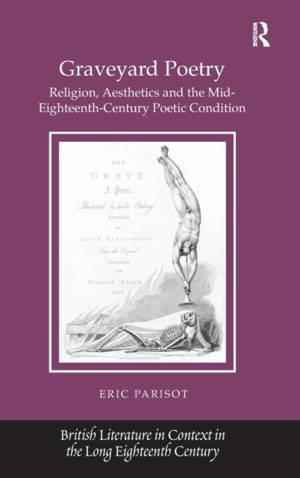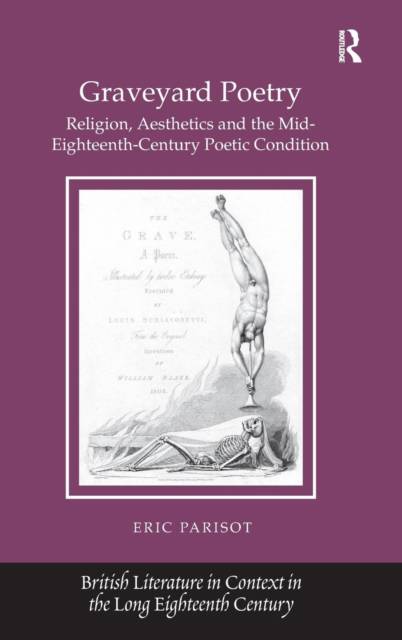
Door een staking bij bpost kan je online bestelling op dit moment iets langer onderweg zijn dan voorzien. Dringend iets nodig? Onze winkels ontvangen jou met open armen!
- Afhalen na 1 uur in een winkel met voorraad
- Gratis thuislevering in België vanaf € 30
- Ruim aanbod met 7 miljoen producten
Door een staking bij bpost kan je online bestelling op dit moment iets langer onderweg zijn dan voorzien. Dringend iets nodig? Onze winkels ontvangen jou met open armen!
- Afhalen na 1 uur in een winkel met voorraad
- Gratis thuislevering in België vanaf € 30
- Ruim aanbod met 7 miljoen producten
Zoeken
€ 305,45
+ 610 punten
Uitvoering
Omschrijving
While immensely popular in the eighteenth century, current critical wisdom regards graveyard poetry as a short-lived fad with little lasting merit. In the first book-length study of this important poetic mode, Eric Parisot suggests, to the contrary, that graveyard poetry is closely connected to the mid-century aesthetic revision of poetics. Graveyard poetry's contribution to this paradigm shift, Parisot argues, stems from changing religious practices and their increasing reliance on printed material to facilitate private devotion by way of affective and subjective response. Coupling this perspective with graveyard poetry's obsessive preoccupation with death and salvation makes visible its importance as an articulation or negotiation between contemporary religious concerns and emerging aesthetics of poetic practice. Parisot reads the poetry of Robert Blair, Edward Young and Thomas Gray, among others, as a series of poetic experiments that attempt to accommodate changing religious and reading practices and translate religious concerns into parallel reconsiderations of poetic authority, agency, death and afterlife. Making use of an impressive body of religious treatises, sermons and verse that ground his study in a precise historical moment, Parisot shows graveyard poetry's strong ties to seventeenth-century devotional texts, and most importantly, its influential role in the development of late eighteenth-century sentimentalism and Romanticism.
Specificaties
Betrokkenen
- Auteur(s):
- Uitgeverij:
Inhoud
- Aantal bladzijden:
- 194
- Taal:
- Engels
- Reeks:
Eigenschappen
- Productcode (EAN):
- 9781409434733
- Verschijningsdatum:
- 13/09/2013
- Uitvoering:
- Hardcover
- Formaat:
- Genaaid
- Afmetingen:
- 156 mm x 234 mm
- Gewicht:
- 458 g

Alleen bij Standaard Boekhandel
+ 610 punten op je klantenkaart van Standaard Boekhandel
Beoordelingen
We publiceren alleen reviews die voldoen aan de voorwaarden voor reviews. Bekijk onze voorwaarden voor reviews.











